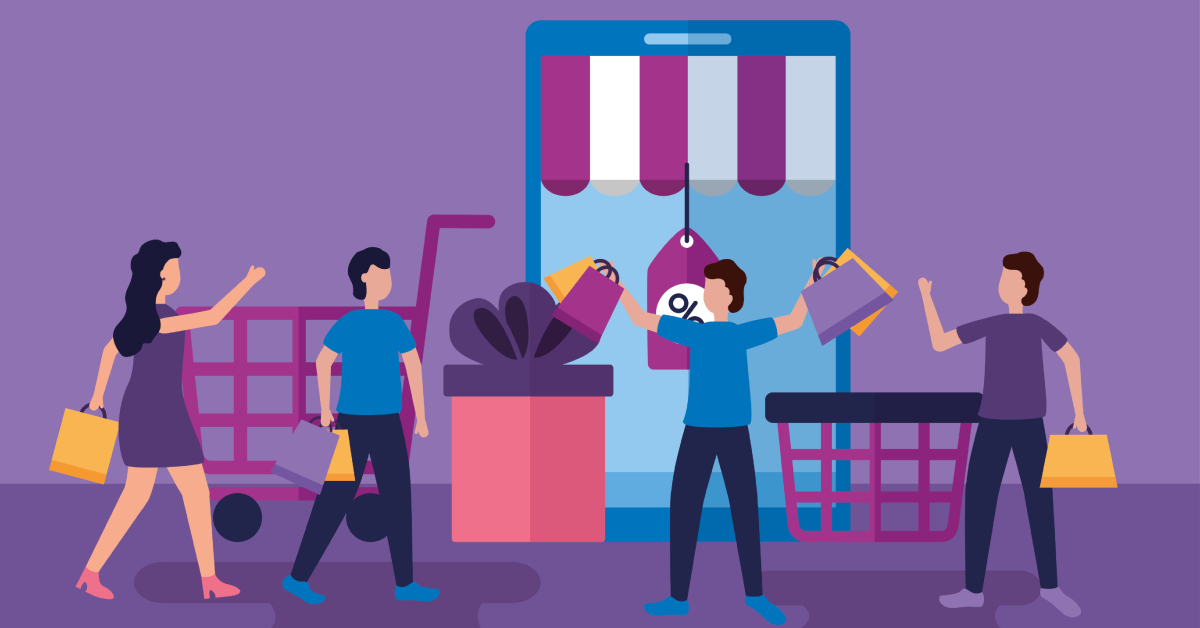Let’s face it, in today’s competitive retail landscape, every sale counts. But what if you could add more value to each customer interaction? Upselling and cross-selling are powerful techniques that can significantly boost your average order value and keep those cash registers ringing. But what if you run a brick-and-mortar store, not an online powerhouse? Fear not! The rise of mobile point-of-sale (mPOS) systems has leveled the playing field, making upselling and cross-selling a breeze for physical stores of all sizes.
Upselling vs. Cross-Selling: A Quick Refresher
Before we delve into the intricacies of mPOS, let’s ensure we’re on the same page. Upselling is the art of convincing a customer to purchase a higher-end version of the product they’re already interested in. Think about it – perhaps a customer picks up a mid-range pair of headphones. You, the savvy salesperson, could suggest a premium model with noise-canceling technology and superior sound quality.
Cross-selling, on the other hand, focuses on introducing complementary products that enhance the customer’s original purchase. For a customer buying a new camera, you might suggest a memory card, carrying case, or cleaning kit. Both techniques aim to increase the customer’s total spending, but through slightly different approaches.
Challenges in Traditional Brick-and-Mortar Upselling and Cross-Selling
Historically, brick-and-mortar retailers have faced challenges in implementing effective upselling and cross-selling strategies. Traditional checkout counters with static displays and limited staff interaction often result in missed opportunities to engage customers and suggest relevant products.
Additionally, the lack of real-time inventory visibility can lead to frustrations when attempting to cross-sell items that may not be in stock. These hurdles underscore the need for innovative solutions to streamline the upselling and cross-selling process in physical retail environments.
Why Upselling and Cross-Selling Matter in Brick-and-Mortar
Traditionally, upselling and cross-selling were seen as the domain of online retailers with their targeted product recommendations and strategic product placement. But with the mPOS revolution, physical stores can now compete on an equal footing. Here’s why:
- Enhanced Customer Engagement: mPOS systems free salespeople from clunky cash registers, allowing them to spend more time interacting with customers. This personalized approach opens doors for natural upselling and cross-selling conversations.
- Real-Time Inventory Management: mPOS systems offer a clear view of current inventory levels. This empowers salespeople to confidently suggest complementary products, knowing exactly what’s in stock and avoiding the dreaded “out-of-stock” scenario.
- Data-Driven Recommendations: Many mPOS systems integrate with inventory management software, allowing for data-driven upselling and cross-selling strategies. By analyzing past sales trends, you can identify frequently purchased add-on items and train your staff to promote them effectively.
- Streamlined Transactions: mPOS systems allow for quick and easy checkout, even when recommending additional products. This eliminates friction at the point of sale, making customers more receptive to upsells and cross-sells.
How mPOS Can Help You Upsell and Cross-Sell Like a Pro
Now that you understand the power of mPOS, let’s explore some specific ways these systems can elevate your upselling and cross-selling game:
- Product Bundles: Create pre-defined bundles that combine a core product with frequently bought add-ons. mPOS systems can showcase these bundles on the checkout screen, enticing customers to add them to their cart with a single tap.
- Targeted Promotions: Leverage mPOS data to identify customer demographics and purchase history. Use this information to display targeted promotions on the mPOS screen, recommending relevant upsells and cross-sells based on individual customer behavior.
- Discount Incentives: Offer discounts or bundle deals for purchasing multiple items. mPOS systems can automatically calculate these discounts at checkout, removing any manual calculations and streamlining the process.
Beyond Technology
While mPOS technology empowers upselling and cross-selling, it’s crucial to remember that the human touch is also crucial. Here are some additional tips to ensure your upselling and cross-selling efforts are customer-centric:
- Focus on Value, Not Just Sales: Always emphasize the added benefit your upsell or cross-sell offers. Explain how it enhances the customer’s experience with the original product.
- Active Listening is Key: Pay close attention to customer needs and preferences. Don’t push products that seem like a mismatch.
- Train Your Sales Staff: Invest in training your staff on effective upselling and cross-selling techniques. Equip them with the knowledge and confidence to have natural, value-driven conversations.
Conclusion: Upselling and Cross-Selling Your Way to Retail Success
By embracing upselling and cross-selling techniques, and leveraging the power of mPOS systems, brick-and-mortar stores can significantly boost their average order value and stay ahead of the curve. Remember, upselling and cross-selling are not about being pushy; they’re about offering genuine value and enhancing the customer experience. When done right, these strategies can turn a one-time purchase into a loyal customer relationship.
If you want to stay ahead of the curve, equip your staff with RDEP’s mPOS and personalize your upsells and cross-sells to watch your store’s sales roar!

